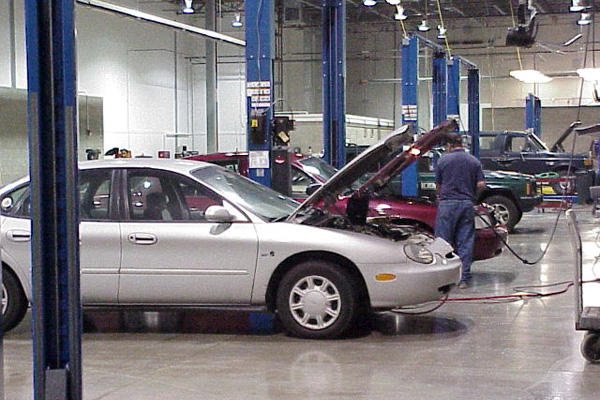The catalytic converter is a very important part of the emissions control system on your vehicle. (Chapter 7 tells you what this part looks like and how it works.) It's usually good for the life of a vehicle, but occasionally it does fail. The best thing you can do is be alert for signs of trouble and head for a service facility if you suspect that the catalytic converter is malfunctioning. Technicians will put your vehicle on an electronic diagnostic machine to locate the source of the problem, possibly remove the oxygen sensor from the exhaust manifold or exhaust pipe ahead of the catalytic converter to see if that changes things, and replace the catalytic converter, if necessary.
Tip: Here are five ways to tell that something may be wrong with your catalytic converter:
- Your vehicle's fuel efficiency suddenly drops.
- Your vehicle doesn't accelerate when you step on the gas pedal.
- Your vehicle may refuse to start.
- Your vehicle fails an emissions test.
- The MIL or Check Engine light comes on.
The most common cause of failure in a catalytic converter in an older car is that it becomes so clogged that the exhaust gases can't get through it to the muffler and out of the car. (If air can't get out the rear of the vehicle, it can't come in the front end, so the engine dies because no air is coming in to formthe fuel/air mixture.)
Every car sold in the U.S. since 1996 has had an OBD (On-Board Diagnostic) II system that tests the catalytic converter (among many other things). If the unit allows too much pollution to escape from the tailpipe, it illuminates the MIL and produces a trouble code that can be read by a technician withwhat's called a "scan tool."
The catalytic converter is sensitive to changes in the contents and temperature of the exhaust gases, so another possible cause for failure is if the cylinder head gasket is damaged, allowing oil or coolant to get into the combustion chamber and be burned in the cylinders. Also, if your ignition system isn't operating properly, unburned fuel in the exhaust gases can cause the catalytic converter to wear out or break down. This is another good reason for going for tune-ups at specified intervals!
Remember: It's against the law in many states to remove a catalytic converter and run a vehicle without one.
Because the catalytic converter can become extremely hot, it's important not to park your vehicle over a bed of dry grass or dry leaves, which could catch fire and destroy not only your vehicle but also the surrounding area!
From Auto Repair for Dummies, copyright © 2009 by Wiley Publishing, Inc., Indianapolis, Indiana. Used by arrangement with John Wiley & Sons, Inc.










